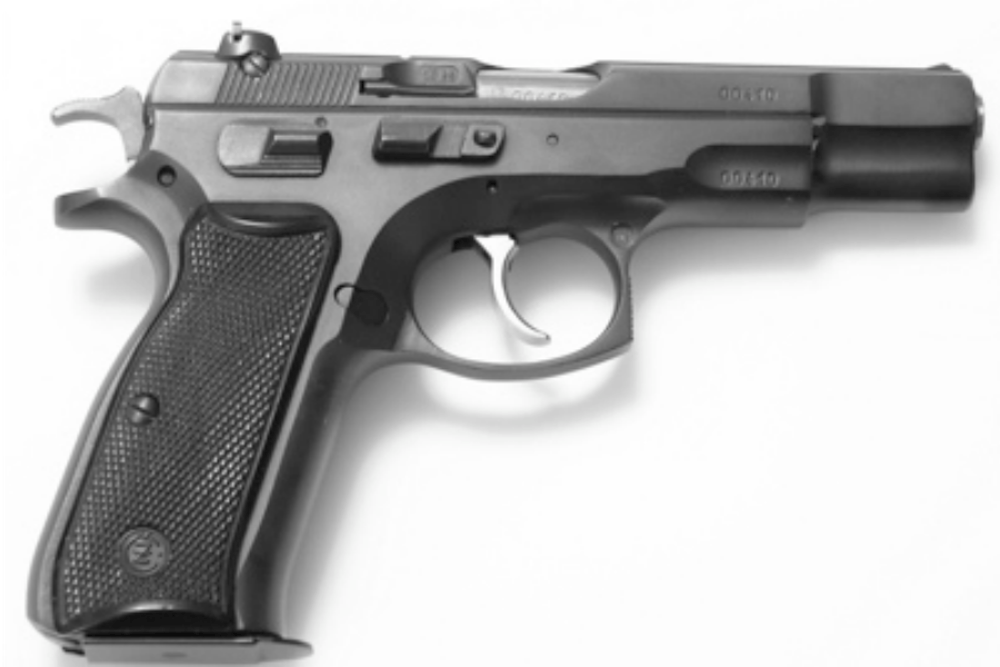Milam's Musings
After the tragic deaths of Virginia television reporter, Allison Parker, and cameraman, Adam Ward, last week, renewed discussions of gun control abound, but one issue is often overlooked: suicide.
While violent crime of all kinds, including by firearms, have trended downward for the last twenty years, suicides have gone up. In 2010, according to Pew Research, 19,392 Americans killed themselves with a gun, compared to 11,078 homicides by a gun.
A drug overdose is the most common method to attempt suicide, but it's fatal in less than 3 percent of cases, whereas 85 percent of suicide attempts via a gun are successful.
There are two factors worth considering here: First, suicide can often be an impulsive decision, but, second, a gun is clearly more effective and therefore much harder to reverse once that impulsive decision is made. Someone that uses razors or tries to OD on pills has a chance at being rescued.
The Harvard School of Public Health published a study on the correlation between states with high rates of gun ownership and suicides. In states where the percent of households with a gun was 47, there were 16,577 firearm suicides. Comparatively, in states where the percent of households with guns was 15, there were 4,257 total firearm suicides.
Certainly, a correlation can't tell the whole story, but it's compelling enough to warrant more scrutiny no matter one's beliefs about guns. It's a matter of access combined with impulsiveness.
"So it's not that gun owners are more suicidal. It's that they're more likely to die in the event that they become suicidal, because they are using a gun," said Catherine Barber, director of Harvard Injury Control Research Center (HICRC).
One of my own preconceived beliefs - and apparent misconceptions - was that suicide was a long-term escalation that culminated in the most irreversible act, not an impulsive one, anymore than jumping out the window of a burning building is impulsive. However, the science appears to point to such impulsiveness.
Barber said that 24 percent of people that survive a suicide attempt said they contemplated it for less than 5 minutes, 48 percent for less than 30 minutes and 70 percent for less than an hour.
The goal, then, in this regard, would be to reduce the access because reducing the access means reducing the deadliness of the attempt.
However, there's also the case of Japan. Japan has one of the lowest gun ownership rates in the world, but also one of the highest suicide rates. Last year alone, 25,000 people killed themselves. Cultural differences might help to explain those statistics, in part.
Enjoy what you're reading?
Signup for our newsletter
Unfortunately, I don't have all the answers. Combing through the data, there certainly appears to be a strong relationship between gun access and successful suicides.
And while gun control advocates like to point to Australia's gun ban and confiscation (semi-automatic and automatic rifles and shotguns and estimates of a third or a fifth of all guns in the country) as a model to potentially implement in the United States, it's just not going to happen.
No political will exists in the United States to institute a mandatory gun buyback. Even if it were possible, there are anywhere between 270 million and 310 million guns in the United States.
One promising avenue exists, creating unlikely bedfellows: mental health professionals and firearms dealers working together on suicide prevention, known as the Gun Shop Project.
Means Matter, a campaign born out of HICRC, started the project in 2009 in New Hampshire, which formed a group called NH Firearm Safety Coalition. The goal is for gun shop owners to be vigilant about selling guns to a suicidal customer and to post suicide prevention materials in their stores. Undoubtedly, that's a challenging prospect, but it's encouraging to see the project bringing together these different people all concerned about curtailing gun suicides.
The other solution is to attack tangential issues to the access of guns, i.e. the mental state of a potential suicide victim. Seeking therapy and talking about your problems should make as much sense as a routine physical check up. Instead, it's still maligned and stigmatized.
My cognitive awareness of such is not helpful, either. I've been at Miami for what feels like a decade now, but I've never utilized the counseling services offered to all Miami students, even when I've thought about it considerably.
An initial consultation is free and the next two sessions are funded by a general student fee. Anything above four is only $25 for each session. Check out http://miamioh.edu/student-life/student-counseling-service/index.html for more information.
Even with how passionate I am about mental health and suicide, I still find myself ensnared by its stigma. Awareness is a huge step, but action has to be close behind, which is easier said than done.
After shootings like the recent one in Virginia, gun control advocates say, "Enough is enough." Gun rights advocates get even more entrenched. Nothing changes. No new dialogue bridge is built between the two sides. And the suicide component is largely ignored.
Moreover, like this column has demonstrated, there are no easy solutions and it's going to take working together, like the group in New Hampshire, to try to obtain small, but powerful successes.
I reference him a lot, but Ta-Nehisi Coates offers some sound wisdom on this point. Sometimes we don't need to believe in hope and that the arc of history bends toward justice or any of those things.
Sometimes, it's just enough to struggle for justice, or in this case, a better outcome on suicides in the United States. It's a sort of justice, though, right - a justice against the injustice of that 19,392 number. That's a number which is devoid of the human struggle and the potential for saved lives. But there is beauty and strength in the struggle itself.




